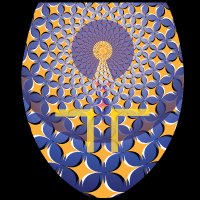Effect of marijuana use on outcomes in traumatic brain injury
Abstract
Traumatic brain injury (TBI) is associated with significant morbidity and mortality. Several studies have demonstrated neuroprotective effects of cannabinoids. The objective of this study was to establish a relationship between the presence of a positive toxicology screen for tetrahydrocannabinol (THC) and mortality after TBI. A 3-year retrospective review of registry data at a Level I center of patients sustaining TBI having a toxicology screen was performed. Pediatric patients (younger than 15 years) and patients with a suspected nonsurvivable injury were excluded. The THC(+) group was compared with the THC(-) group with respect to injury mechanism, severity, disposition, and mortality. Logistic regression was used to determine independent associations with mortality. There were 446 cases meeting all inclusion criteria. The incidence of a positive THC screen was 18.4 per cent (82). Overall mortality was 9.9 per cent (44); however, mortality in the THC(+) group (2.4% [two]) was significantly decreased compared with the THC(-) group (11.5% [42]; P = 0.012). After adjusting for differences between the study cohorts on logistic regression, a THC(+) screen was independently associated with survival after TBI (odds ratio, 0.224; 95% confidence interval, 0.051 to 0.991; P = 0.049). A positive THC screen is associated with decreased mortality in adult patients sustaining TBI.
Cited By:
Shah NV, Lavian JD, Moattari CR, Eldib H, Beyer GA, Mai DH, Challier V, Passias PG, Lafage R, Lafage V, Schwab FJ, Paulino CB, Diebo BG.Iowa Orthop J. 2022 Jun;42(1):57-62.PMID: 35821925Free PMC article. 3
Preston TJ, Albanese BJ, Schmidt NB, Macatee RJ.Psychol Addict Behav. 2022 Dec;36(8):1036-1047. doi: 10.1037/adb0000846. Epub 2022 Jun 13.PMID: 35696184 4
Hahnefeld L, Vogel A, Gurke R, Geisslinger G, Schäfer MKE, Tegeder I.Biomedicines. 2022 Apr 15;10(4):914. doi: 10.3390/biomedicines10040914.PMID: 35453664Free PMC article. 5
Psychedelics for Brain Injury: A Mini-Review.
Khan SM, Carter GT, Aggarwal SK, Holland J.Front Neurol. 2021 Jul 29;12:685085. doi: 10.3389/fneur.2021.685085. eCollection 2021.PMID: 34393973Free PMC article.
O'Brien LD, Smith TL, Donvito G, Cravatt BF, Newton J, Spiegel S, Reeves TM, Phillips LL, Lichtman AH.Cannabis Cannabinoid Res. 2021 Dec;6(6):508-521. doi: 10.1089/can.2020.0175. Epub 2021 Jun 17.PMID: 34142866Free PMC article. 7
Song S, Kong X, Wang B, Sanchez-Ramos J.Cannabis Cannabinoid Res. 2022 Aug;7(4):415-423. doi: 10.1089/can.2020.0119. Epub 2021 Feb 26.PMID: 33998887 8
The combined effects of alcohol and marijuana use prior to traumatic brain injury on mortality.
Leskovan JJ, Patel PD, Pederson J, Moore A, Afaneh A, Brown LR.Ann Med Surg (Lond). 2020 Nov 27;60:639-643. doi: 10.1016/j.amsu.2020.11.059. eCollection 2020 Dec.PMID: 33304579Free PMC article. 9
Use of Medical Cannabis to Treat Traumatic Brain Injury.
Hergert DC, Robertson-Benta C, Sicard V, Schwotzer D, Hutchison K, Covey DP, Quinn DK, Sadek JR, McDonald J, Mayer AR.J Neurotrauma. 2021 Jul 15;38(14):1904-1917. doi: 10.1089/neu.2020.7148. Epub 2021 Jan 25.PMID: 33256496Free PMC article.
Understanding Cannabis-Based Therapeutics in Sports Medicine.
Maurer GE, Mathews NM, Schleich KT, Slayman TG, Marcussen BL.Sports Health. 2020 Nov/Dec;12(6):540-546. doi: 10.1177/1941738120956604. Epub 2020 Sep 16.PMID: 32936058Free PMC article.
Vogel A, Wilken-Schmitz A, Hummel R, Lang M, Gurke R, Schreiber Y, Schäfer MKE, Tegeder I.Sci Rep. 2020 Sep 10;10(1):14929. doi: 10.1038/s41598-020-71879-x.PMID: 32913220Free PMC article. 12
Leskovan JJ, Patel PD, Pederson JM, Moore A, Afaneh A, Brown LR.Ann Med Surg (Lond). 2020 Jul 22;57:201-204. doi: 10.1016/j.amsu.2020.07.031. eCollection 2020 Sep.PMID: 32793339Free PMC article. 13
Reddy V, Grogan D, Ahluwalia M, Salles ÉL, Ahluwalia P, Khodadadi H, Alverson K, Nguyen A, Raju SP, Gaur P, Braun M, Vale FL, Costigliola V, Dhandapani K, Baban B, Vaibhav K.EPMA J. 2020 Apr 15;11(2):217-250. doi: 10.1007/s13167-020-00203-4. eCollection 2020 Jun.PMID: 32549916Free PMC article
Medical Cannabis Reduced Agitation in Acquired Brain Injury: A Case Study.
Hergert DC, Mayer AR, Hutchinson K, Sadek JR, Quinn DK.Psychosomatics. 2020 Nov-Dec;61(6):819-824. doi: 10.1016/j.psym.2020.01.006. Epub 2020 Feb 25.PMID: 32111375Free PMC article.No abstract available. 15
Cannabis Use and Sport: A Systematic Review.
Docter S, Khan M, Gohal C, Ravi B, Bhandari M, Gandhi R, Leroux T.Sports Health. 2020 Mar/Apr;12(2):189-199. doi: 10.1177/1941738120901670. Epub 2020 Feb 5.PMID: 32023171Free PMC article. 16
Comorbidity in adults with traumatic brain injury and all-cause mortality: a systematic review.
Xiong C, Hanafy S, Chan V, Hu ZJ, Sutton M, Escobar M, Colantonio A, Mollayeva T.BMJ Open. 2019 Nov 7;9(11):e029072. doi: 10.1136/bmjopen-2019-029072.PMID: 31699721Free PMC article. 17
Sandsmark DK, Bashir A, Wellington CL, Diaz-Arrastia R.Neuron. 2019 Aug 7;103(3):367-379. doi: 10.1016/j.neuron.2019.06.002.PMID: 31394062Free PMC article.
Loflin MJE, Babson K, Sottile J, Norman SB, Gruber S, Bonn-Miller MO.Am J Drug Alcohol Abuse. 2019;45(5):506-513. doi: 10.1080/00952990.2019.1604722. Epub 2019 May 28.PMID: 31135227Free PMC article. 19
Paloczi J, Varga ZV, Hasko G, Pacher P.Antioxid Redox Signal. 2018 Jul 1;29(1):75-108. doi: 10.1089/ars.2017.7144. Epub 2017 Jul 18.PMID: 28497982Free PMC article.
Endocannabinoids: A Promising Impact for Traumatic Brain Injury.
Schurman LD, Lichtman AH.Front Pharmacol. 2017 Feb 17;8:69. doi: 10.3389/fphar.2017.00069. eCollection 2017.PMID: 28261100Free PMC article.
Gruenbaum SE, Zlotnik A, Gruenbaum BF, Hersey D, Bilotta F.CNS Drugs. 2016 Sep;30(9):791-806. doi: 10.1007/s40263-016-0355-2.PMID: 27339615Free PMC article.
Pryce G, Riddall DR, Selwood DL, Giovannoni G, Baker D.J Neuroimmune Pharmacol. 2015 Jun;10(2):281-92. doi: 10.1007/s11481-014-9575-8. Epub 2014 Dec 24.PMID: 25537576
Ginsburg BC.Clin Pharmacokinet. 2015 Feb;54(2):129-31. doi: 10.1007/s40262-014-0210-x.PMID: 25377690No abstract available.
